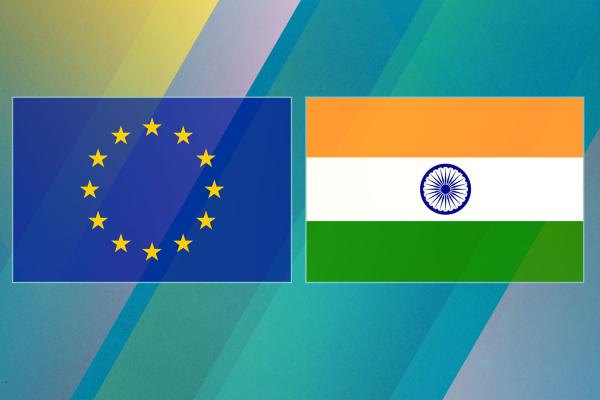- Country or region
- India
- Trade topics
- Negotiations and agreements
- Trade policy
India is amongst the world’s fastest-growing large economies and is an important player in global economic governance. India is already an important trade and investment partner for the EU and could hold significant further potential. It represents a sizable and dynamic market, with an annual projected GDP growth rate of over 8% according to the IMF, which would make it the fastest-growing emerging economy.

EU-India Free Trade Agreement, Investment Protection Agreement and Geographical Indications Agreement
Being negotiated
Trade picture
- The EU is India's largest trading partner, accounting for €124 billion worth of trade in goods in 2023 or 12.2% of total Indian trade, topping the USA (10.8%) and China (10.5%). The EU is the second-largest destination for Indian exports (17.5% of the total) after the USA (17.6%), while China only ranks fourth (3.7%).
- India is the EU’s 9th largest trading partner, accounting for 2.2% of the EU's total trade in goods in 20231, well behind the USA (16.7%), China (14.6%), or the UK (10.1%).
- Trade in goods between the EU and India has increased by almost 90% in the last decade.
- Trade in services between the EU and India reached €50.8 billion in 2023, up from €30.4 billion in 2020.
- The EU's share in foreign investment stock in India reached €108.3 billion in 2022, up from €82.3 billion in 2019, making the EU a leading foreign investor in India. This is significant, but way below EU foreign investment stocks in China (€247.5 billion) or Brazil (€293.4 billion).
- Some 6,000 European companies are present in India, providing directly 1.7 million jobs and indirectly 5 million jobs in a broad range of sectors.
The EU and India
A key EU objective in its trade relations with India is to work towards a sound, transparent, open, non-discriminatory and predictable regulatory and business environment for European companies trading with or investing in India, including the protection of their investments and intellectual property. The aim is to contribute to unlocking the untapped potential of two-way trade and investment between the EU and India.
Currently, India’s trade regime and regulatory environment remains relatively restrictive. Technical barriers to trade (TBT), sanitary and phyto-sanitary (SPS) measures, deviation from internationally-agreed standards, as well as discrimination based on legislative or administrative measures by India, affect a wide range of sectors, including goods, services, public procurement and investment.
The EU uses all available channels and fora to work with India to ensure fair market access and predictable investment conditions, as well as to promote the full respect by both sides of their multilateral obligations under the World Trade Organization (WTO). Key instruments in this respect are the EU-India High-Level Dialogue on Trade and Investment established in 2021 by a decision of the July 2020 EU-India Summit, as well as the EU-India Trade Sub-Commission established under the 1994 Cooperation and Partnership Agreement between the EU and India, and its specialised working groups and dialogues.
For more information
More information on the EU-India strategic partnership, including in the area of trade and investment, can be found on the new EU Strategy for India adopted on 20 November 2018 and the related Council conclusions.
Also relevant are the joint statements adopted on the occasion of the EU-India Summit held on 15 July 2020 and the EU-India Leaders’ Meeting held on 8 May 2021.
EU-India trade negotiations
On 8 May 2021, the EU and Indian leaders’ agreed to resume negotiations for a “balanced, ambitious, comprehensive and mutually beneficial” trade agreement, and to launch separate negotiations on an investment protection agreement and an agreement on geographical indications (GIs). Leaders also agreed to link trade negotiations to finding “solutions to long-standing market access issues”.
Both sides are now engaged in bilateral negotiations on trade, investment protection and geographical indications. A Sustainability Impact Assessment (SIA) is being conducted to examine the potential impacts of the future agreements.
Trading with India
- Importing into the EU from India
- EU trade defence measures on imports from India
- Exporting from the EU to India
- Trade relations are part of the EU's overall political and economic relations with India
- India is a member of the World Trade Organization
Latest news
The Commission has launched a consultation on the effect that India’s WTO inconsistent tariffs on ICT goods have on Union economic interests and the use of the EU Enforcement Regulation to enforce India’s compliance with its international obligations.
Today, the EU and India have strengthened their relationship as strategic partners by setting up a new Trade and Technology Council (TTC).
TRADE/2022/OP/0008 Trade Sustainability Impact Assessment (SIA) in Support of Negotiations with India
